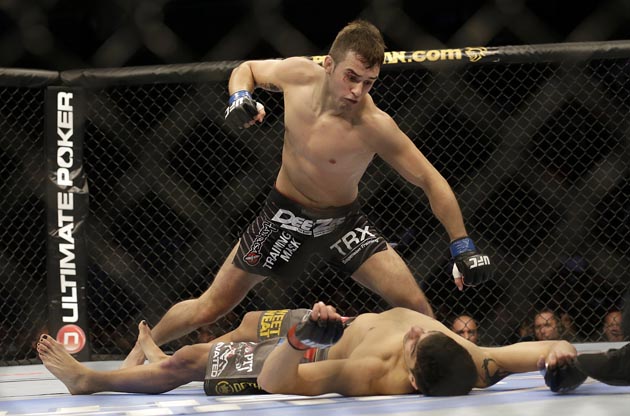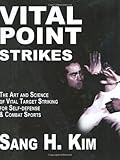By Joshua Schneyer, Ryan McNeill and Janet Roberts
NEW YORK (Reuters) - The fertilizer plant that exploded on Wednesday, obliterating part of a small Texas town and killing at least 14 people, had last year been storing 1,350 times the amount of ammonium nitrate that would normally trigger safety oversight by the U.S. Department of Homeland Security (DHS).
Yet a person familiar with DHS operations said the company that owns the plant, West Fertilizer, did not tell the agency about the potentially explosive fertilizer as it is required to do, leaving one of the principal regulators of ammonium nitrate - which can also be used in bomb making - unaware of any danger there.
Fertilizer plants and depots must report to the DHS when they hold 400 lb (180 kg) or more of the substance. Filings this year with the Texas Department of State Health Services, which weren't shared with DHS, show the plant had 270 tons of it on hand last year.
A U.S. congressman and several safety experts called into question on Friday whether incomplete disclosure or regulatory gridlock may have contributed to the disaster.
"It seems this manufacturer was willfully off the grid," Rep. Bennie Thompson, (D-MS), ranking member of the House Committee on Homeland Security, said in a statement. "This facility was known to have chemicals well above the threshold amount to be regulated under the Chemical Facility Anti-Terrorism Standards Act (CFATS), yet we understand that DHS did not even know the plant existed until it blew up."
Company officials did not return repeated calls seeking comment on its handling of chemicals and reporting practices. Late on Friday, plant owner Donald Adair released a general statement expressing sorrow over the incident but saying West Fertilizer would have little further comment while it cooperated with investigators to try to determine what happened.
"This tragedy will continue to hurt deeply for generations to come," Adair said in the statement.
Failure to report significant volumes of hazardous chemicals at a site can lead the DHS to fine or shut down fertilizer operations, a person familiar with the agency's monitoring regime said. Though the DHS has the authority to carry out spot inspections at facilities, it has a small budget for that and only a "small number" of field auditors, the person said.
Firms are responsible for self reporting the volumes of ammonium nitrate and other volatile chemicals they hold to the DHS, which then helps measure plant risks and devise security and safety plans based on them.
Since the agency never received any so-called top-screen report from West Fertilizer, the facility was not regulated or monitored by the DHS under its CFAT standards, largely designed to prevent sabotage of sites and to keep chemicals from falling into criminal hands.
The DHS focuses "specifically on enhancing security to reduce the risk of terrorism at certain high-risk chemical facilities," said agency spokesman Peter Boogaard. "The West Fertilizer Co. facility in West, Texas is not currently regulated under the CFATS program."
The West Fertilizer facility was subject to other reporting, permitting and safety programs, spread across at least seven state and federal agencies, a patchwork of regulation that critics say makes it difficult to ensure thorough oversight.
An expert in chemical safety standards said the two major federal government programs that are supposed to ensure chemical safety in industry - led by the Environmental Protection Agency (EPA) and Occupational Safety and Health Administration (OSHA) - do not regulate the handling or storage of ammonium nitrate. That task falls largely to the DHS and the local and state agencies that oversee emergency planning and response.
More than 4,000 sites nationwide are subject to the DHS program.
"This shows that the enforcement routine has to be more robust, on local, state and federal levels," said the expert, Sam Mannan, director of process safety center at Texas A&M University. "If information is not shared with agencies, which appears to have happened here, then the regulations won't work."
HODGEPODGE OF REGULATION
Chemical safety experts and local officials suspect this week's blast was caused when ammonium nitrate was set ablaze. Authorities suspect the disaster was an industrial accident, but haven't ruled out other possibilities.
The fertilizer is considered safe when stored properly, but can explode at high temperatures and when it reacts with other substances.
"I strongly believe that if the proper safeguards were in place, as are at thousands of (DHS) CFATS-regulated plants across the country, the loss of life and destruction could have been far less extensive," said Rep. Thompson.
A blaze was reported shortly before a massive explosion leveled dozens of homes and blew out an apartment building.
A Ryder truck packed with the substance mixed with fuel oil exploded to raze the Oklahoma federal building in 1995. Another liquid gas fertilizer kept on the West Fertilizer site, anhydrous ammonia, is subject to DHS reporting and can explode under extreme heat.
Wednesday's blast heightens concerns that regulations governing ammonium nitrate and other chemicals - present in at least 6,000 depots and plants in farming states across the country - are insufficient. The facilities serve farmers in rural areas that typically lack stringent land zoning controls, many of the facilities sit near residential areas.
Apart from the DHS, the West Fertilizer site was subject to a hodgepodge of regulation by the EPA, OSHA, the U.S. Department of Transportation, the Texas Department of State Health Services, the Texas Commission on Environmental Quality and the Office of the Texas State Chemist.
But the material is exempt from some mainstays of U.S. chemicals safety programs. For instance, the EPA's Risk Management Program (RMP) requires companies to submit plans describing their handling and storage of certain hazardous chemicals. Ammonium nitrate is not among the chemicals that must be reported.
In its RMP filings, West Fertilizer reported on its storage of anhydrous ammonia and said that it did not expect a fire or explosion to affect the facility, even in a worst-case scenario. And it had not installed safeguards such as blast walls around the plant.
A separate EPA program, known as Tier II, requires reporting of ammonium nitrate and other hazardous chemicals stored above certain quantities. Tier II reports are submitted to local fire departments and emergency planning and response groups to help them plan for and respond to chemical disasters. In Texas, the reports are collected by the Department of State Health Services. Over the last seven years, according to reports West Fertilizer filed, 2012 was the only time the company stored ammonium nitrate at the facility.
It reported having 270 tons on site.
"That's just a god awful amount of ammonium nitrate," said Bryan Haywood, the owner of a hazardous chemical consulting firm in Milford, Ohio. "If they were doing that, I would hope they would have gotten outside help."
In response to a request from Reuters, Haywood, who has been a safety engineer for 17 years, reviewed West Fertilizer's Tier II sheets from the last six years. He said he found several items that should have triggered the attention of local emergency planning authorities - most notably the sudden appearance of a large amount of ammonium nitrate in 2012.
"As a former HAZMAT coordinator, that would have been a red flag for me," said Haywood, referring to hazardous materials.
(This story corrects rental truck brand used by McVeigh was from Ryder, not U-Haul, in paragraph 20 in April 20 story)
(Additional reporting by Anna Driver in Houston, Timothy Gardner and Ayesha Rascoe in Washington, and Selam Gebrekidan and Michael Pell in New York; Editing by Mary Milliken and Robert Birsel)
Source: http://news.yahoo.com/texas-fertilizer-company-didnt-heed-disclosure-rules-blast-171654800--finance.html
Skylar Diggins kim jong un lollapalooza Facebook Phone lindsay lohan emma watson Jaromir Jagr

 Anthony Njokuani followed Romero's knockout with a pasting of Roger Bowling. Njokuani ruined Bowling's UFC debut with a second-round KO.
Anthony Njokuani followed Romero's knockout with a pasting of Roger Bowling. Njokuani ruined Bowling's UFC debut with a second-round KO. T.J. Dillashaw kept the KO-party going with a knockout of Hugo Viana at 4:22 of the first round. Jorge Masvidal won a bloody technical decision over Tim Means and then the knockout fun started all over again.
T.J. Dillashaw kept the KO-party going with a knockout of Hugo Viana at 4:22 of the first round. Jorge Masvidal won a bloody technical decision over Tim Means and then the knockout fun started all over again. Joseph Benavidez dominated Darren Uyenoyama for two rounds, then finished up with a TKO with just 10 seconds left in the second round.
Joseph Benavidez dominated Darren Uyenoyama for two rounds, then finished up with a TKO with just 10 seconds left in the second round. Myles Jury stayed undefeated with a knockout of Ramsey Nijem at 1:02 in the second round. Francis Carmont and Lorenz Larkin broke the KO streak with a decision. The judges saw it 29-28 on all three cards for Carmont, thought Larkin controlled the bout and had stellar takedown defense.
Myles Jury stayed undefeated with a knockout of Ramsey Nijem at 1:02 in the second round. Francis Carmont and Lorenz Larkin broke the KO streak with a decision. The judges saw it 29-28 on all three cards for Carmont, thought Larkin controlled the bout and had stellar takedown defense. Chad Mendes finished off the knockout-filled preliminary card with a KO of Darren Elkins in 1:08. It's his third straight win since losing to Jose Aldo in his first title shot. After the fight, he asked for another one.
Chad Mendes finished off the knockout-filled preliminary card with a KO of Darren Elkins in 1:08. It's his third straight win since losing to Jose Aldo in his first title shot. After the fight, he asked for another one.

















